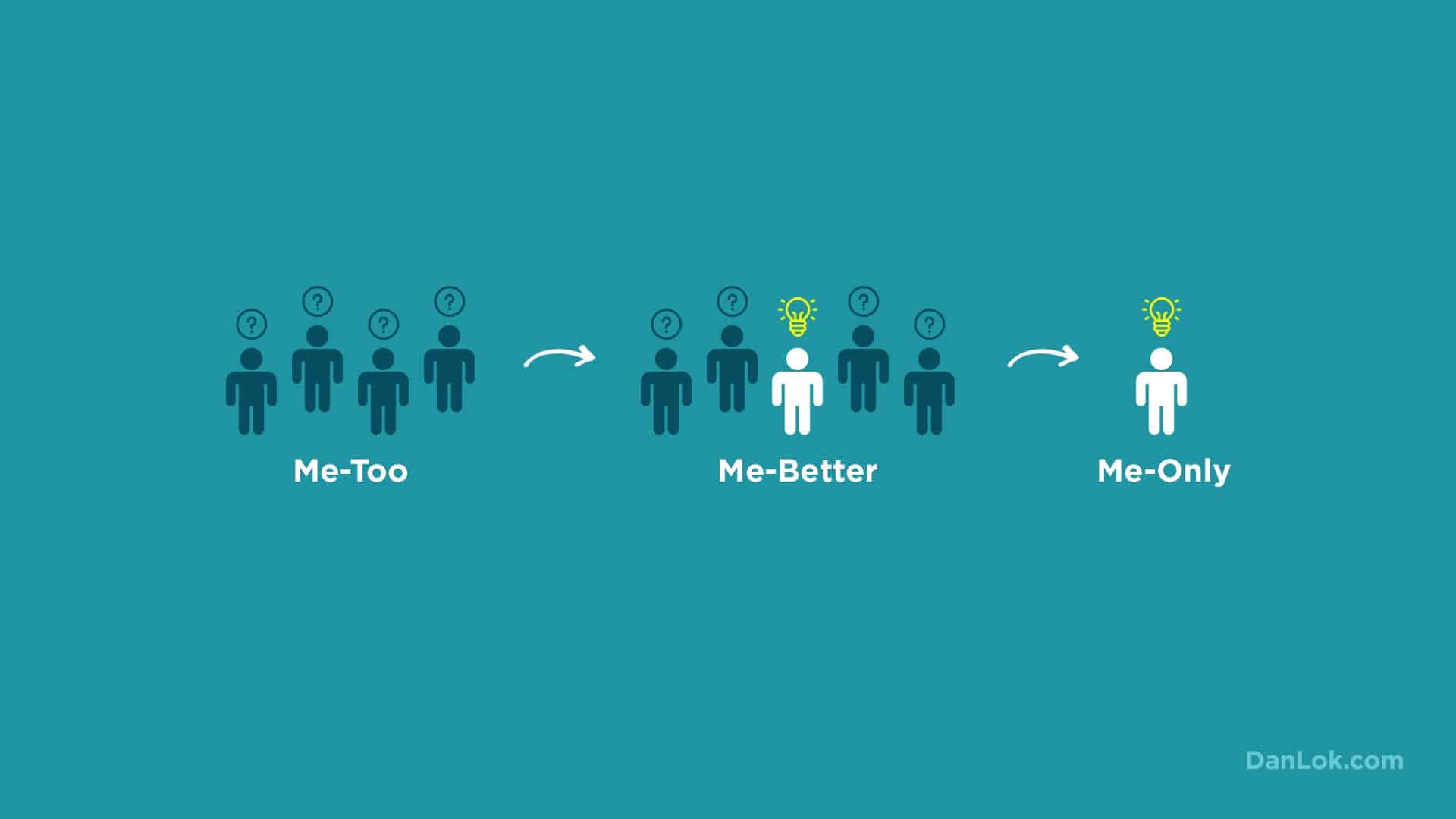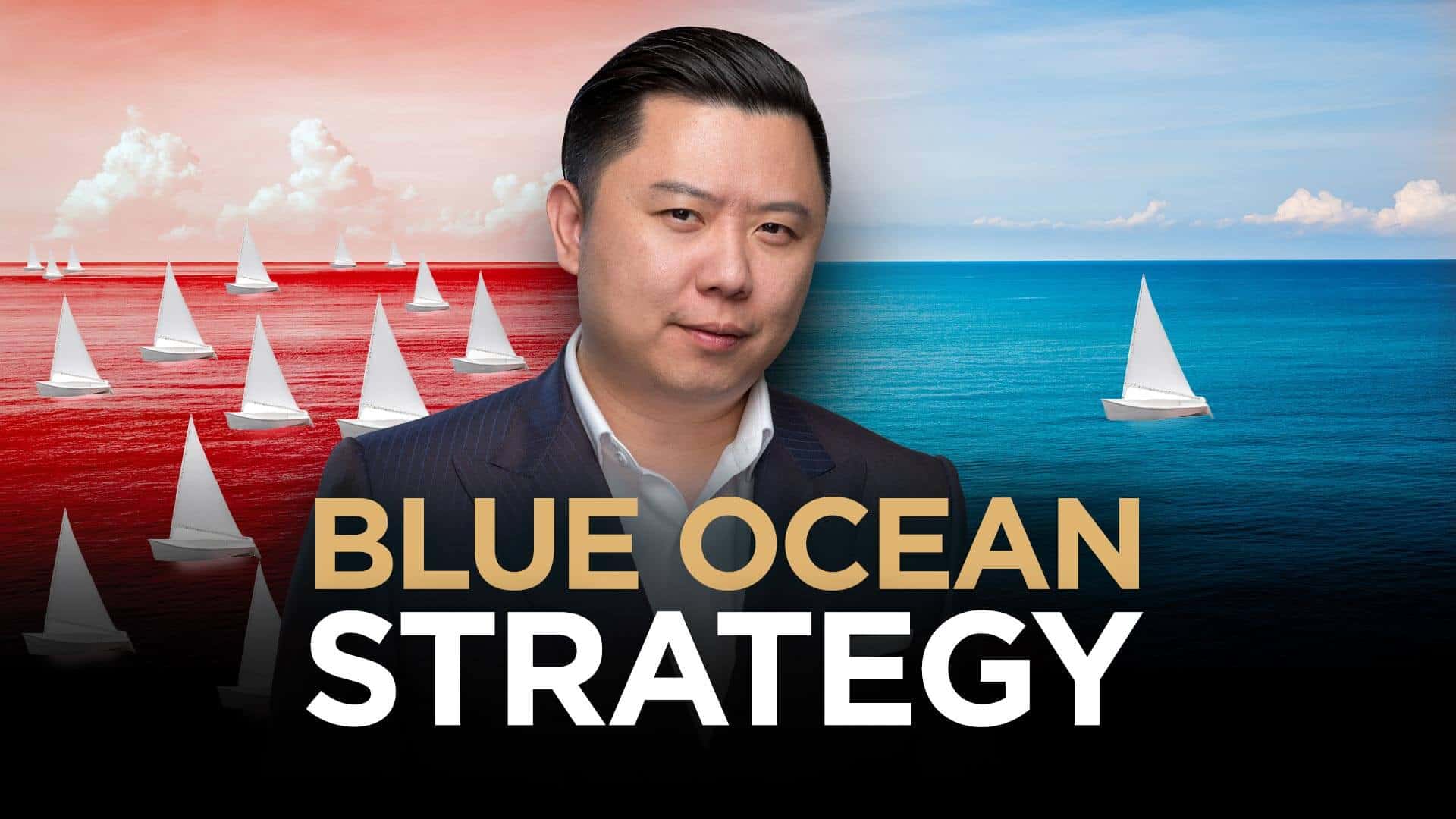With hundreds of thousands of new businesses starting up each year, is it possible to break free from your competition?
No business wants to be in a Red Ocean, fighting against cutthroat competition that turns the water bloody red. Every industry, all your competitors, are in the Red Ocean, like shark infested waters where everyone fights for the same prey.
Instead, we all prefer the Blue Ocean… calm, peaceful…and the only business of its kind in that market. Ideally, every business wants to be in the Blue Ocean, but what must your business do to be in this uncontested market space?
Before I share the business model that will differentiate you, let’s take a look at a recent phenomenon that disrupted the marketplace. Uber.
Taxis have been around for a long time as a public transportation option. There are many cab companies. Each one tries to stand out by saying, “I am better than everybody else. My services are better than everybody else’s.” But there’s one problem.
These statements may or may not be true and consumers become confused. They’re skeptical because they don’t know what is good and what is not so good. Just because you say you’re better doesn’t mean you’re better.
Then Uber comes along and introduces the concept of ride sharing services. They completely change how we pay for cab fares. No more tipping or carrying credit cards or cash. No more wondering exactly where your cab is.
There are good and bad points to this disruption, but that’s part of capitalist society. For Uber, competition becomes irrelevant. For taxi companies and drivers, they lose market share. So what can your business do to move yourself to an untapped environment?
There are three models you can follow. To be different, to be a giant in a vast blue ocean of customers, you must follow the third type.
Watch this video about how the Blue Ocean Strategy makes your business stand out.
1. Me-Too Business
In the first kind of business, the Me-Too Business, you are the same as everybody else. If you’re put next to the competitors, your message and products get swallowed up before your consumers can tell the difference. You look like everybody else. You provide the same product and service.
For example, there are over 35,000 health clubs in the USA, and at least ten, maybe more, major health club chains, each with 100 to 2000 locations. How can a customer decide to choose your club instead of someone else’s?
Maybe you tell them about your features. Does your location have a workout area? Group exercise classes? Personal training? Not surprisingly, most health and fitness clubs have these exact same features. You need to do more to stand out.
2. Me-Better Business
In the Me-Better Business, you’re better than everybody else. Maybe you’ve been in business longer than your competitors, maybe your packaging is better, or your warranty or your technology is better. It doesn’t matter. In the Me-Better Business, you’re the one saying you’re better.
Your health club is better because there are so many locations that a member can work out anytime, anywhere. Your club has the best equipment and programs for losing weight. Or, your club has more equipment and personal trainers. These are the reasons why you say your club is better.
How can you get your customers to say your club is not only better, but the best because you are different?
3. Me-Only Business
The Me-Only Business is where you want to be because you are the only person in that space that does what you do.
In the 1990s, a women’s health club broke into a market already saturated with health clubs, but it realized there was an untapped market in the fitness industry. At one end, there were high-end, full service health clubs. At the other end were home exercise programs that required little or no equipment. This club found a Blue Ocean somewhere in the middle.
It was different from a typical health club because machines were arranged a circle in groups of ten so members could talk and support one another while working out. The nonjudgmental atmosphere included the lack of mirrors on the wall. Most importantly, the company, Curves, offered value at a lower cost.
It also created a new demand for fitness consumers. And it wasn’t the only company to create new demand in the last decade. It’s possible to find a Blue Ocean in a 200 year old industry that has entertained generations.

Creating A Blue Ocean In A Declining Industry
If you’re thinking you can’t find a Blue Ocean for your new business, think about the challenges Cirque du Soleil had in a declining, centuries old industry: the circus. Children wanted to play video games, and people protested animal rights. So what did they do?
Let’s start with what they didn’t do. They didn’t cater to the traditional end users, the children. They appealed to the traditional purchasers, and charged a lot more for an entertainment experience. Adults and corporate clients who enjoyed the theatre, ballet, Broadway shows, and opera now had another option, but in a circus setting.
Cirque now had an uncontested market space and they had eliminated costs. No more animals to feed and multiple performers to transport. People now came to the circus instead of the other way around. And they were now catering to upscale audiences.
Discovering a Blue Ocean is possible, whether you’re in an old market, or a new one. In the case of iTunes, they entered an existing market and created a new one.
Creating A Blue Ocean By Competing With An Existing Market
Now how does a company create its own market by competing with one that already exists? It can, if the current market is entirely illegal.
In the late 1990s, file sharing programs enabled the illegal downloading of digital music files. A demand for MP3 players to play mobile digital music was answered with products such as Apple’s iPod. After making an agreement with five major music companies, Apple’s iTunes offered à la carte song downloads.
Consumers no longer had to buy an entire CD for one or two songs, which was previously a major annoyance. They could get the specific songs they wanted and recording companies could have the copyright protection they wanted. It was a win-win that started a new trend.
Fast forward to today, when millions of songs, movies, TV shows, books, and podcasts are now downloaded on iTunes. Apple has been dominating this Blue Ocean for more than a decade.
Now I’ve shown you examples of how companies have created their own Blue Ocean, by breaking free from tradition, like Cirque du Soleil did, or by creating a demand, like Curves did. But what if you’re a small company, or a micro business, or sole proprietorship? How can you disrupt the marketplace?
Dan Lok’s Blue Ocean Strategy
I’ve started a lot of businesses in my career. Some were Me-Too. I mowed lawns, fixed computers, and operated just like everybody else with a single employee company.
I’ve also had Me-Better businesses in which I was striving to have better marketing skills, management skills, better service, or better products.
But where I found massive wealth was the Me-Only Business. That’s when you’re the best one in the world at this one thing that only you can do. You may not get there overnight, but you can get a bit closer over time. How I created a Me-Only Business was by creating a certification program.
I founded the High-Ticket ClosersTM Certification Program which graduated thousands of students worldwide in its first year. The concept of a salesperson wasn’t new, but the term “High-ticket Closer” to describe people who close deals for premium products wasn’t familiar to most people. That put me in a Blue Ocean.
Your business idea doesn’t have to be revolutionary. You just have to give the marketplace that perception. That perception they have becomes the reality if they perceive you as Me-Only.
Once you’re doing something nobody else is doing, then you have dominated the marketplace and you have applied the Blue Ocean Strategy.
So, think about how you can find the Blue Ocean and dominate it.
How could you apply the Blue Ocean Strategy to your business? Comment below.
Suggested articles:
4 Types of Entrepreneurs: Why Some Have Freedom But Most Still Have A Job
The Ladder of Wealth: How to Climb Your Way to Financial Independence
Copywriting: Dan Lok’s Comprehensive Guide To Closing In Print



